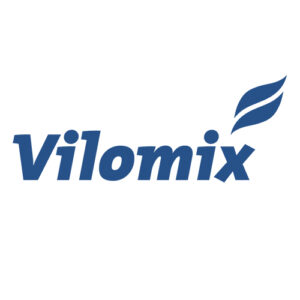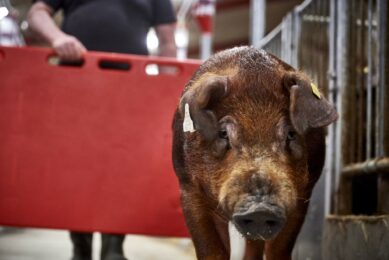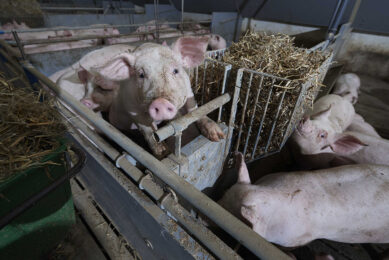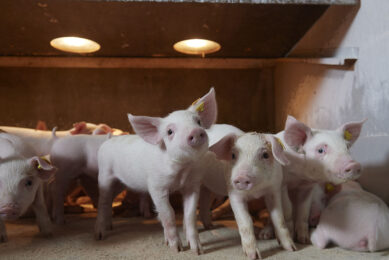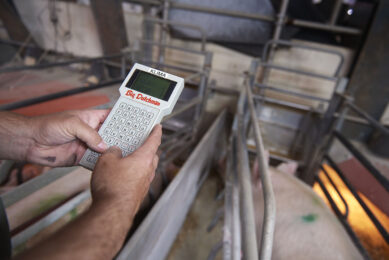3 steps to high-performing lactating sows
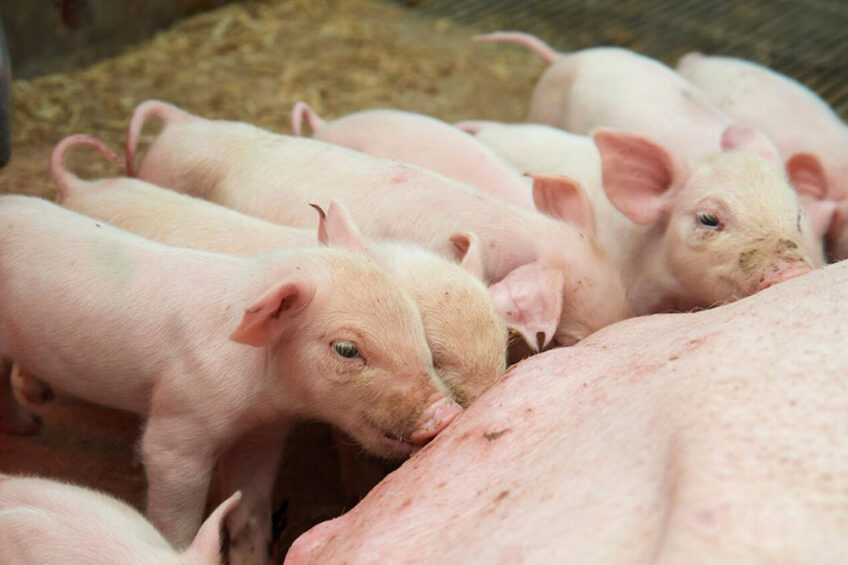
This article will look at how an optimal feeding strategy can maximise milk production for healthy piglets.
Sow milk production and piglet mortality are prime concerns during farrowing and lactation. From the moment the sow enters the farrowing unit, a robust feed management strategy is a ‘must’ to ensure the productivity and performance of the sow and her litter.
Farmers should keep an eye on 3 factors in particular. Sow weight loss must be kept to a minimum, particularly loss of back fat. The time since the last feed should be as short as possible at the onset of farrowing. And a high level of feed hygiene is essential at all times.
During this demanding period in a sow’s life, increased feed intake is the bottom line.
 Maintaining back fat
Maintaining back fat
Back fat thickness is both a sure indicator of sow body condition and a precondition for high milk production. Sows that lose a lot of weight during lactation are at risk of producing fewer piglets in the next cycle. To avoid this scenario, farmers should aim for back fat thickness of 14 to 17 mm at the time of farrowing and 13 to 16 mm at weaning. The goal is that 90% of sows should have an average body condition score.
For the piglets, the amount and composition of the milk is critical to their growth and development in preparation for the transition to solid feed.
In Denmark, well-managed feeding is one of the reasons why average live births per litter have increased since 2011 (Figure 1). For sows that meet the criteria for average body condition, a daily feed allowance of 3.4kg is recommended on entering the farrowing unit. This should be reduced to 3kg/day around 2 days before farrowing is expected.
Figure 1- Number of liveborn piglets per litter on Danish farms from 2011 to 2020.
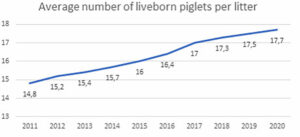
 Regular feeding intervals
Regular feeding intervals
Feeding should take place at equal intervals 3 to 4 times a day. By ensuring stable blood glucose levels, this minimises the number of stillborn piglets and the need for farrowing assistance. According to a 2017 study by Theil et al, the longer the time since the last feeding, the longer the farrowing time and the higher the risk of piglet mortality (Figure 2 and 3).
Figure 2 – Farrowing takes longer when the time since the last feeding increases (Theil et al., 2017).
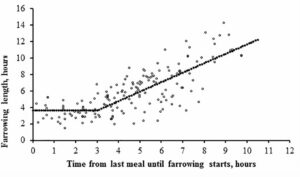
Figure 3 – A longer farrowing time results in higher piglet mortality (Theil et al., 2017).
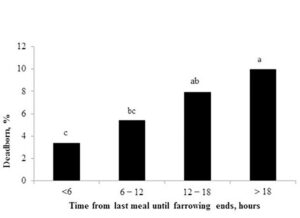
During lactation, feeding starts at 3kg a day and should be increased by 0.2 to 0.5kg a day, depending on the feed intake pattern of the individual sow. The daily feed allowance should then be adjusted by a further 0.2kg in the second half of the lactation period. Sows typically reach their peak milk yield at around day 16. At this stage, the feed allowance should be adjusted based on the condition of the sow and the number of suckling piglets in the litter.
Figure 4 shows the recommended daily feed allowance for a sow in average body condition with 14 piglets over the lactation period. An average daily feed intake of 6 to 7kg during lactation is sufficient to ensure good production results.
Figure 4 – Average daily feed allowance for a lactating sow with 14 piglets.
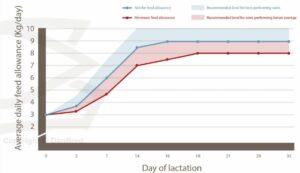
Source: DanBred Feeding Manual
 An eye on hygiene
An eye on hygiene
Hygienic feeding management is of utmost importance in the farrowing unit. If the sows have not emptied the troughs after each feeding, the troughs must be cleaned. Leftover feed provides the perfect conditions for unwanted bacterial growth, which can lead to sickness. Farmers may then skip a feeding to ensure the sows have regained their appetite for the next one. Uneaten feed may also be a sign that a sow is ill and needs treatment.
Daily checks of the water supply are equally important. A lactating sow needs approximately 35 to 50 litres of water a day to ensure sufficient milk production. To facilitate this, the drinking nipple must be able to release four litres a minute.
A well-balanced feed is, of course, the foundation of success. Soluble and insoluble fibres are important to maintain gut health, and all needs for protein, vitamins and micro-minerals must be met in full. Follow the standard recommendation in Table 1, and you’re off to a promising start.
Table 1 – Standard recommendation for the nutrient content of feed for lactating sows in a temperate climate zone.
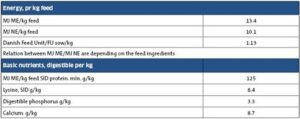
Source: DanBred Feeding Manual


